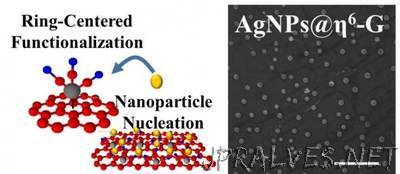
“University of Illinois at Chicago scientists have discovered a new chemical method that enables graphene to be incorporated into a wide range of applications while maintaining its ultra-fast electronics. Graphene, a lightweight, thin, flexible material, can be used to enhance the strength and speed of computer display screens, electric/photonics circuits, solar cells and various medical, chemical and industrial processes, among other things. It is comprised of a single layer of carbon atoms bonded together in a repeating pattern of hexagons. Isolated for the first time 15 years ago by a physics professor at the University of Manchester in England, it is so thin that it is considered two-dimensional and thought to be the strongest material on the planet. Vikas Berry, associate professor and department head of chemical engineering, and colleagues used a chemical process to attach nanomaterials on graphene without changing the properties and the arrangement of the carbon atoms in graphene. By doing so, the UIC scientists retained graphene’s electron-mobility, which is essential in high-speed electronics. The addition of the plasmonic silver nanoparticles to graphene also increased the material’s ability to boost the efficiency of graphene-based solar cells by 11 fold, Berry said. The research, funded by the National Science Foundation (CMMI-1030963), has been published in the journal Nano Letters.”
